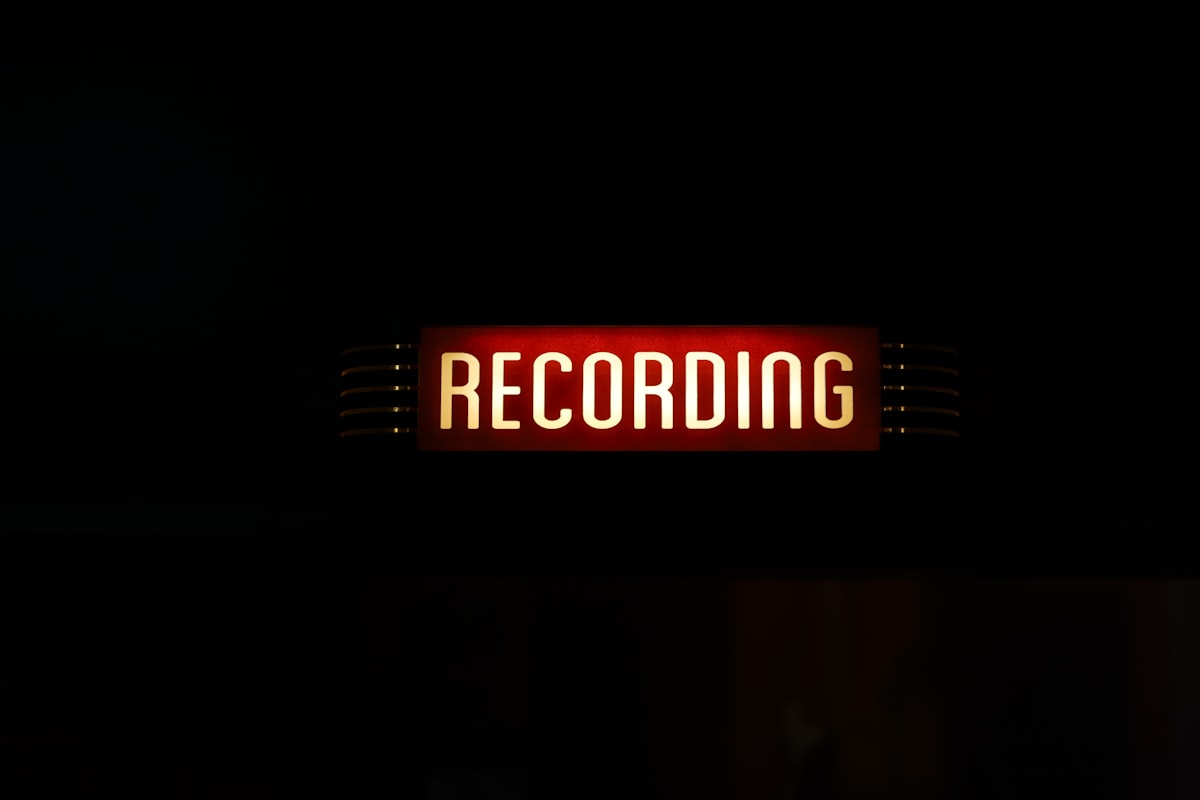22 Tips for Recording Vocals: Passing on the Golden Rules

As a newcomer to the recording studio, it's easy to feel a bit overwhelmed. It is therefore just as easy to make mistakes that could normally be avoided. In this article, I will outline the 22 tips I wish I had before recording for the first time.
1. Come Prepared
Whether recording at home or recording in a studio, have a think about what you might need while you're recording. This mainly includes food and drinks.
Even if you're home, have all your snacks, drinks and lunch prepared so that you don't waste any time preparing these things. You want your day recording to be as efficient as possible so you don't lose motivation. If you're in a studio, don't assume they'll have everything you need.
2. Don't Do Too Many Takes
Recording too many times is going to leave you tired and a bit sick of the song you're recording. You should certainly record the song at least three times, but no more than five times in one go.
If you need more, consider taking a drink or snack break. This is particularly important if you're recording more than one song in a day.
3. Choose the Right Space
Recording at home can have some advantages, giving the recording a 'authentic feel' and making you feel comfortable. You also are not paying for time in the studio and can take as long as you need.
But it's important to have the right space. Large rooms will need more acoustic treatment to absorb echoes and other interference. However, smaller rooms tend to have a build-up of bass frequencies, requiring bass traps (acoustic panels designed for the corners of the room to trap lower frequencies).
If you have a medium-sized room (such as a bedroom), you will find it easier to produce an even frequency response with less acoustic treatment. Having furniture and carpet/rugs also help as this will help absorb some of the sound.
You can find out more about treating a room for vocals here.
4. Choose Decent Equipment
You don't need the most expensive brands to make your recording good. However, you do need equipment that is quality. Using a USB microphone, for example, is going to automatically handicap the recording quality and require more editing and treatment.
You can find my recommended equipment in this article if you need a guide. Keep in mind that your singing style will determine which microphone you should buy (see below).
5. Consider Your Singing Style
Everyone has a difference voice. Generally, good recording microphones are cardioid condenser microphones. However, if your singing style includes a lot of belting (or screaming), you should consider a dynamic microphone instead. Dynamic microphones are less sensitive and should handle loud/high notes better.
6. Setup the Microphone Properly
Keep the microphone away from the center of the room. Sound waves can build up in the center of the room, causing more disturbance in the final recording. You should also make sure the microphone is the right height, direction and distance from your mouth.
- Height: level of your mouth
- Direction: directly facing you or angled slightly off (to reduce plosives)
- Distance: At least 4 inches from your mouth. Approximately 6-12 inches is best.
7. Use a Pop Filter
A pop filter reduces harsh sound such as plosives ('p', 'd', etc.) and sibilance ('s', 'sh', 'f', etc). It is a thin piece of fabric between you and the microphone that absorbs these sound waves. As a bonus, a pop filter can also help you keep the right distance from the microphone.
8. Use a Shock Mount
A shock mount is a piece of equipment that suspends your microphone in the air so that it is not connected (rigidly) to the stand. This prevents vibrations from the floor (taps, thuds, etc) from coming through the recording. You may not notice these sounds normally, but a super-sensitive recording microphone can pick them up.
9. Try Not to Breathe into the Microphone
Another thing that will be picked up by a sensisitive recording microphone is your breath. Particularly those large breaths we take before singing a phrase. If you can, try to avoid breathing into the microphone so you don't have obvious breaths in the recording (unless you like the raw feel they create).
10. Choose the Right Headphones
You should have something playing in your headphones that is keeping you in time (usually the backing track). Whatever it is, you do not want that sound to be picked up by the microphone.
The only thing that should be recorded is your voice so you can add them to the backing track after. Unfortunately, this will occur when using standard headphones. Therefore, invest in some good noise-cancelling headphones that will not let any sound escape your ears.
11. Stand Up
You might be tempted to bring a chair into the recording studio to get yourself comfortable, especially if you're recording at home. Try to avoid sitting down when you record as this will limit your voice.
When you stand, you can maintain correct singing posture, which will help you take bigger breaths and brace for power notes.
12. Do a Test Run
Before you start singing, you should run a test into your microphone. Record a small segment where you test the range of your voice, different harsh sounds ('p', 't', 'd', 's', 'f', etc.), singing loudly and softly and taking breaths. This will give you an idea of what the microphone is picking up and what you need to adjust.
13. Know How to Use your DAW
Having a limited understanding of your DAW software (Digital Audio Workstation) will limit what you can do to your recording. There may be features that you don't know about that can remove unwanted noise or enhance the sound of your voice. Make sure to look into every capability of the software to get the best out of your recording.
14. Don't Record with Effects On
Some programs will allow you to record with effects on your voice, such as reverb. Try to avoid this. Having effects on your voice when recording will mean that you cannot remove those effects later (if they don't work with the backing).
Sometimes you can change what you hear in your headphones compared to what is recorded. However, makes sure it is only in your headphones because you want your voice to be a blank canvas when it's captured. You can play with effects later.
15. Relax and Be Passionate
Being calm and relaxed will help you get the best out of your voice. Make sure you are comfortable when recording (fed, hydrated and not too hot/cold)and you should be physically up for the session. You should also warmup your voice so your brain knows that you are ready.
Passion is another thing that you want to capture in a recording, but is hard to do. Standing in a small room and singing to nobody can really take the magic out of the performance. This is one of the reasons why live recordings are quite popular. Try your best to bring the same energy and passion to your performance as you would on stage.
16. Sing Along to Your Backing Track
It is best to have the backing track that will be mixed with your voice playing in your ears. This will help you get into the mood of the song and will also keep you in time with the music. This is common, but worth mentioning, in case you were considering just a metronome/click.
17. Know the Song Well
Learn your song well in the days/weeks leading up to the recording. There should never be a moment where you have to think about what comes next or how you're going to sing a certain part.
In saying that, try not to practice on the day of the recording. All your practice should be done beforehand so that you can save your voice for warmups and recording.
18. Don't be Afraid to Sing Loud
Being in an enclosed room can make you hesitant to sing loudly. You need to sing like you would on stage to get the best out of your voice. Holding back will take some of that spark out of the recording and make it more obvious that you're in a studio.
19. Take Breaks When You Need To
Make sure to take a break when you feel you need to. If your voice is feeling strained, take a break and do some gentle exercises. If you're hungry, thirsty or feeling overwhelmed, give yourself the chance to re-energise so you can be the best for your recording.
20. Don't Stop if You Make a Mistake
Mistakes are common during recording. The pressure gets to a lot of people and makes their voice or brain do strange things. If you make a mistake, don't stop recording. Keep going until you finish the song.
The beauty of recording is that you can chop and change any take. You never know, you might just sing the worst verse, but the best chorus all in one take.
21. Listen Back to Each Take
Listening back to each take will give your voice a little break and will also allow you to analyse what is working and what isn't working. Something that sounds great in your head might not sound that great through the microphone or with the backing. That way, you should improve with each take.
22. Double-Check the Vocals are Balanced
When you mix the vocals with the backing (assuming you're mixing it yourself), listen carefully to the balance. You should have enough vocals to feature, but not too much that they overpower the rest of the music.
If you're not sure of this balance, have a listen to some of your favourite songs to see how loud their vocals are compared to the backing music.
Good luck!
